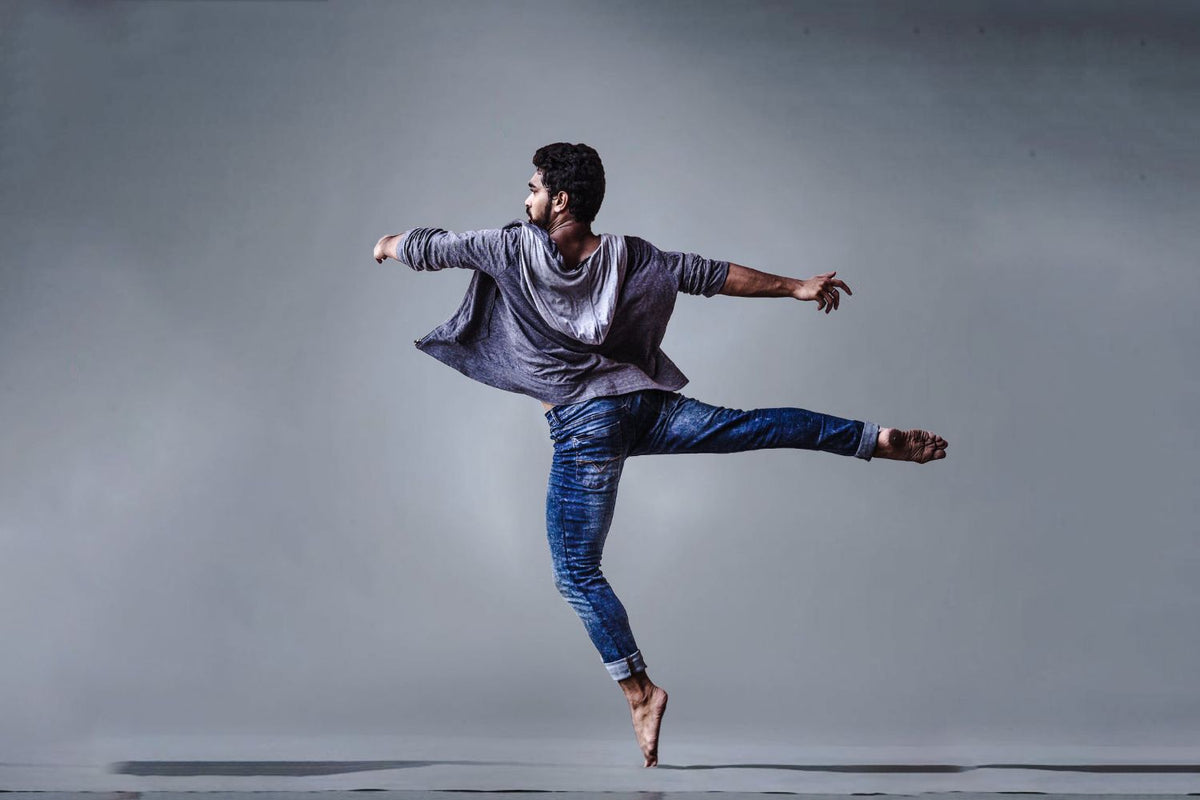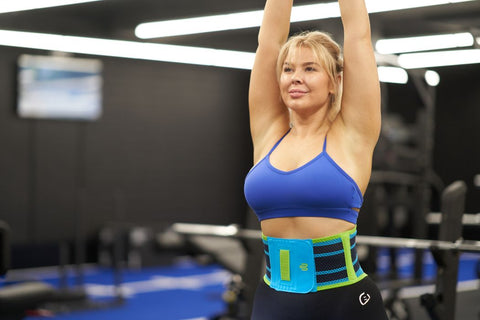Dance Like the Pros: Workouts, Nutrition, and Gear to Dance Better

Are you just starting out, or have you danced for a while? Either way, the tips below will help you improve your form, stamina, and flexibility to work on more complex routines and dance like the pros.
Warm up before dancing
Warming up before dance boosts circulation, increasing oxygen and nutrient supply to the muscles and loosening them up. With your muscles prepped, you reduce your risk of injury. Some great dance warm-ups to try include:
- Jumping jacks to enhance overall blood flow
- Leg swings to activate the leg muscles and increase their flexibility
- Shoulder rolls and neck stretches to limit stiffness in those areas
- Heel raises to active the calves - your body’s “second heart.”
- Hip swings to get the hips moving
You can also practice a few moves out of your choreography for the day to activate the specific muscle groups you’ll be using.
Stretch
Stretching is critical to improving your range of motion and getting into more challenging positions during your routine, like the splits or arabesque.
You’ll need to stretch from the calves to the neck for the best results. While giving a little more attention to problem areas (for example, tight hamstrings) is fine, you shouldn’t neglect any muscle groups.
To that end, make a stretching routine for the whole body and stick to it. The best dance stretches to try include:
- Butterfly for the inner thighs
- Forward bend for the lower back, glutes, and hamstrings
- Downward dog for the glutes, hamstrings, and calves
- Pidgeon for the hips and quads
- Cobra for the chest, upper back and abdominals
- Doorway for the chest and shoulders
- Thread the needle for the deltoids, lats, and erector spinae
Note: stretching is best left until after dance practice when your muscles are warmed up and more flexible. Stretching (especially static stretching) before exercise may negatively affect your performance.
Try foam rolling
If you feel your muscles don’t quite have sufficient give even with consistent flexibility training, it may be a fascia problem. While stretching will improve muscle flexibility, it won’t do much for tight fascia. In fact, trying to stretch past the fascia’s current limit may lead to an injury.
Instead, do a mix of stretching and foam rolling. A foam roller can help break up tight spots and free up previously restricted muscles.
You can also give tennis ball rolling for your feet a try if they feel particularly tense.
Get a dance brace or two
Sports Back Support
Many dance injuries occur in the legs, with the hips, ankles, and knees the most afflicted. So, it’s essential to protect these areas. On that note, quality braces like the Sports Ankle Support, Sports Knee Brace, and Sports Back Support are fantastic options to prevent injury and improve your dance performance.
- These braces’ compression boosts blood flow to reduce muscle fatigue, letting you dance longer.
- Compression and pads work together to activate the muscles and improve proprioception (bodily and spatial awareness, crucial for getting dance moves just right).
- The Sports Ankle Support’s straps add extra stability for improved balance.
Strengthen
Muscle strength is essential for higher jumps, better joint protection, and more endurance for longer routines. Here are the best ones to try:
- Mountain climbers
- Dead bugs
- Clamshells
- Sidesteps
- Planks (front and side)
- Jump squats
- Deadlifts
- Resisted rows
And don’t neglect your feet! Foot and ankle strength are key to balance, en-pointe, and to avoid nasty sprains. Resisted foot flexion and extension are good options. You can also take on some exercises for flat feet, like walking on sand, towel scrunches, and short foot to build arch support and get the oft-neglected intrinsic foot muscles working.
Watch the dance pros (and monitor yourself!)
It’s also a good idea to watch dance videos and record yourself doing choreography. The former will provide inspiration and instruction on where you can improve, while the latter will help you close the gap between how you move and how you think you move.
Rest
There is such a thing as too much exercise. Taking on too quickly and not taking rest days can take a toll on your tendons, muscles, and even bones. While it’s true that muscle tissue builds following microscopic damage, not giving the damage enough time to heal can result in tissue breakdown. Meanwhile, tendons and bones can get damaged from excessive repetitive motion and shock.
Generally, experts recommend taking at least 24 hours off between workouts. Ideally, dancers should train at their peak capacity a couple of times a week, leaving 2 rest days in between. Do note that during a rest day, you should still do some light to moderate-intensity exercise like swimming, walking, or yoga.
Fuel up to dance better
Dancers are usually in a calorie deficit - meaning they expend more energy than they consume. As a general rule of thumb, the average person needs 2000 calories a day. Dance will burn calories on top of that, which you can calculate through MET (Metabolic Equivalent): METs x 3.5 x (your body weight in kilograms) / 200. For example, a 70 kg dancer will burn around 5 calories per minute doing a 4 MET activity (like going through your warm up routine).
Eat plenty of carbs before a long dance class, gym session, or stage performance. Protein is best consumed in the 30-minute window after your workout when your muscles need it most.
And in general, make sure you’re getting all the vitamins and nutrients you need.
To sum up
To take your dance skills to the next level, you’ll need the right diet, gear, and workout routine, complete with warm-ups and cool-downs. These steps will ensure you have the stamina, strength, and flexibility to perfect your routine.
More information
If you require assistance selecting the right product for your needs or wearing the brace, call us on 1300 668 466 or contact us via live chat.
Do you have private health? Most private health extras will cover Bauerfeind Products. Check to see if yours is included. Bauerfeind Private Health Insurance Inquiry.
Bauerfeind was founded in 1929, and since then, we've worked tirelessly to develop and improve our extensive range of braces, insoles, and compression products. Our mission is to provide you with top-of-the-line supports so you can reach your fitness goals or live life without pain holding you back.
Every product is produced entirely in our facilities in Germany with the guidance of doctors, clinics, and orthopaedic technicians.




